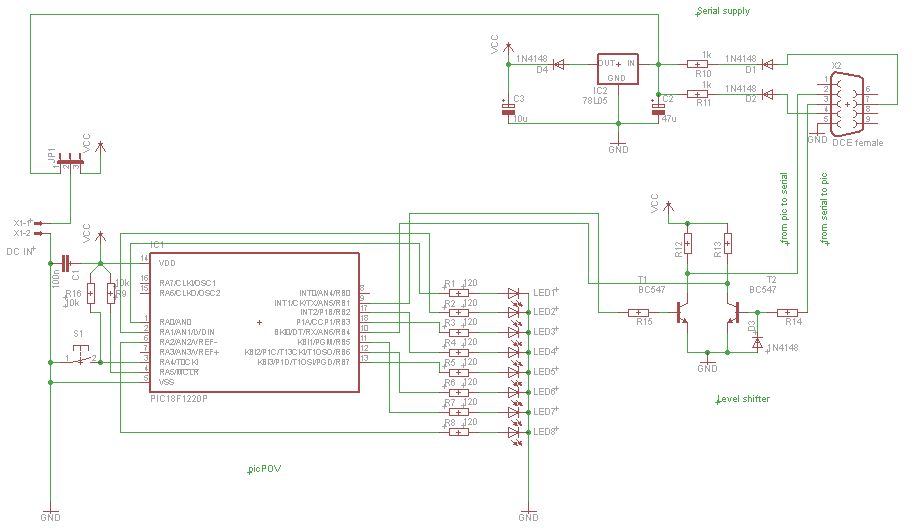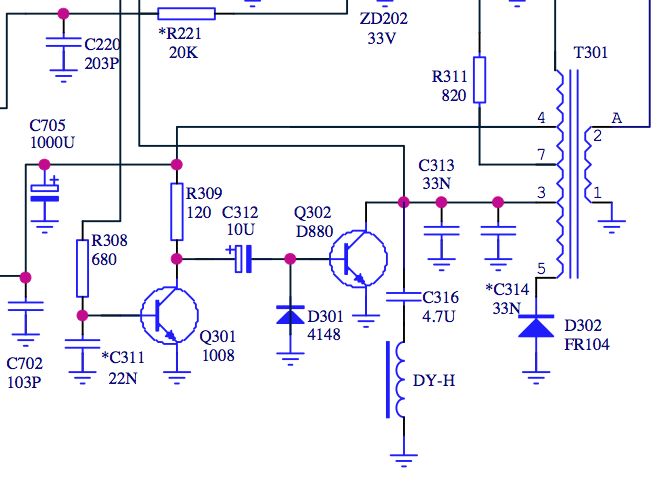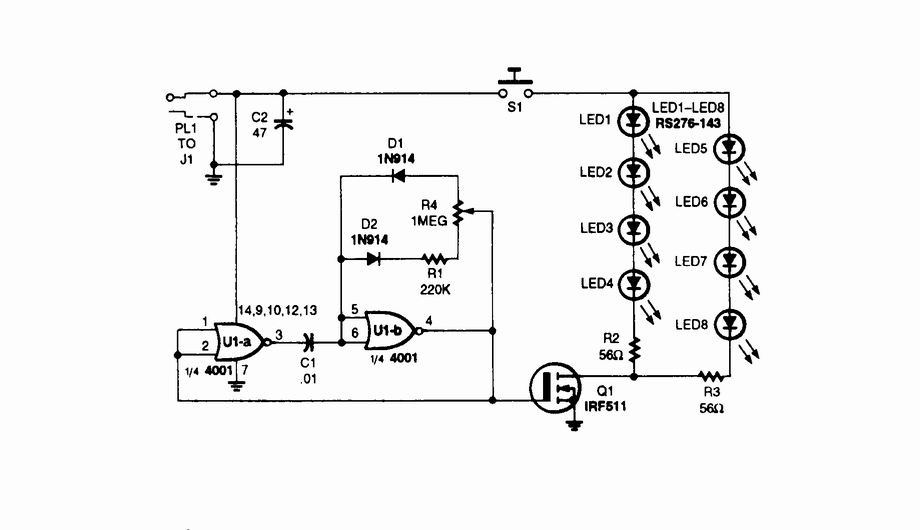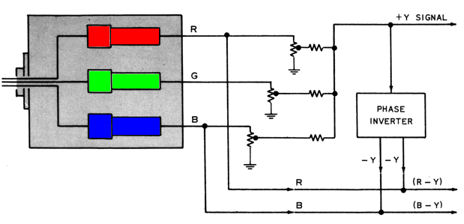
picpov persistence of vision with a pic18f1220

PicPOV is a project based on "persistence of vision." A PIC microcontroller blinks 8 LEDs on and off so that when waved through the air, a message is displayed.
The PicPOV project utilizes the principle of persistence of vision to create the illusion of a solid image through the rapid blinking of LEDs. The core component of this project is a PIC microcontroller, which is programmed to control the timing and sequence of the LED illumination.
In this circuit, eight LEDs are arranged in a linear format and connected to the output pins of the PIC microcontroller. The microcontroller is programmed to turn each LED on and off at a specific timing interval, synchronized with the movement of the device. When the device is waved through the air, the human eye perceives the rapidly blinking LEDs as a continuous image due to the persistence of vision effect.
The circuit design typically includes a power supply, which can be provided by batteries or an external source, ensuring that the microcontroller and LEDs receive adequate voltage and current. Current-limiting resistors are also included in series with each LED to prevent excessive current flow, which could damage the LEDs.
To enhance the user experience, the message displayed can be pre-programmed into the microcontroller's memory, allowing for flexibility in the designs and messages that can be shown. The programming can be done using various development environments compatible with PIC microcontrollers, enabling the integration of different patterns and sequences.
The overall design of the PicPOV project not only demonstrates the application of microcontrollers in visual displays but also serves as an educational platform for understanding the fundamentals of electronics, programming, and optical phenomena.PicPOV is a project based on ""persistence of vision"". A PIC microcontroller blinks 8 LEDs on and off so that when waved through the air, a mes.. 🔗 External reference
The PicPOV project utilizes the principle of persistence of vision to create the illusion of a solid image through the rapid blinking of LEDs. The core component of this project is a PIC microcontroller, which is programmed to control the timing and sequence of the LED illumination.
In this circuit, eight LEDs are arranged in a linear format and connected to the output pins of the PIC microcontroller. The microcontroller is programmed to turn each LED on and off at a specific timing interval, synchronized with the movement of the device. When the device is waved through the air, the human eye perceives the rapidly blinking LEDs as a continuous image due to the persistence of vision effect.
The circuit design typically includes a power supply, which can be provided by batteries or an external source, ensuring that the microcontroller and LEDs receive adequate voltage and current. Current-limiting resistors are also included in series with each LED to prevent excessive current flow, which could damage the LEDs.
To enhance the user experience, the message displayed can be pre-programmed into the microcontroller's memory, allowing for flexibility in the designs and messages that can be shown. The programming can be done using various development environments compatible with PIC microcontrollers, enabling the integration of different patterns and sequences.
The overall design of the PicPOV project not only demonstrates the application of microcontrollers in visual displays but also serves as an educational platform for understanding the fundamentals of electronics, programming, and optical phenomena.PicPOV is a project based on ""persistence of vision"". A PIC microcontroller blinks 8 LEDs on and off so that when waved through the air, a mes.. 🔗 External reference





